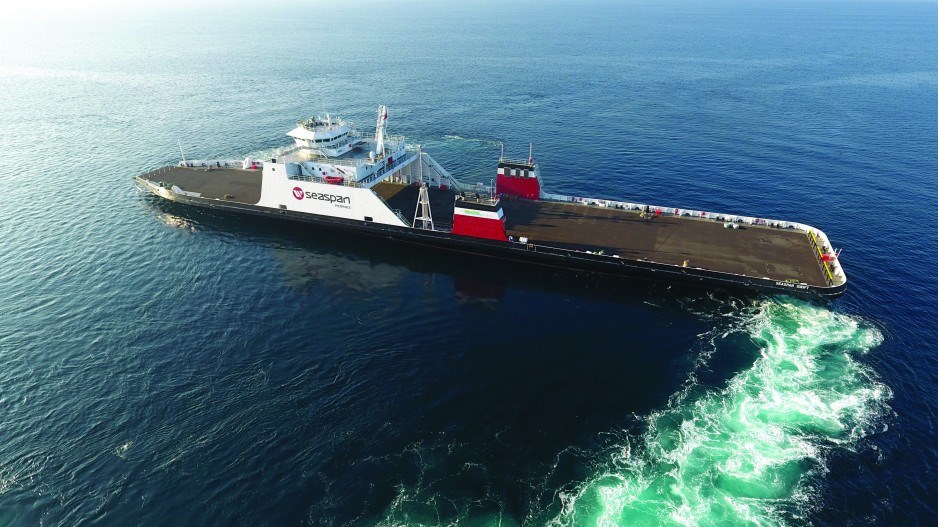Meanwhile, B.C. producers are finding a small but growing domestic market for natural gas, in the form of liquefied natural gas (LNG) and compressed natural gas (CNG), in the trucking and marine transportation sectors.
Last month, BC Ferries received its second purpose-built LNG ferry from Poland. That brings to four the number of LNG-powered ferries that will soon be operating in B.C. waters. Two belong to BC Ferries, two to Seaspan Ferries Corp.
One more purpose-built intermediate-class LNG ferry is still being built, and BC Ferries also plans to retrofit two Spirit-class vessels to run on LNG.
Meanwhile, more trucking fleets and public transit authorities, including TransLink, have also been making the switch from diesel to natural gas when they replace buses.
That’s a big benefit for Westport Fuel Systems (TSX:WPRT), which has supplied the natural gas engines for those buses.
BC Transit now has 74 buses in B.C. running on compressed natural gas, and another 46 are expected to be on the road by 2018. TransLink has 45 CNG buses on the road, and another 51 are expected to arrive by the end of this year.
Thanks to a surplus of new LNG plants, there is a glut of LNG on the market, which has historically been used mostly for thermal power generation.
But thanks to their low costs and low carbon emissions, natural gas and LNG are starting to replace gasoline and diesel as transportation fuels.
As of 2012, natural gas accounted for just 3% of the world’s transportation fuel, according to the U.S. Energy Information Administration (EIA), which estimates that share will grow to 11% by 2040.
The B.C. government is encouraging natural gas utilities like FortisBC and Pacific Northern Gas, which serves northern B.C., to try to develop these new domestic markets for LNG and CNG in transportation.
It recently amended its greenhouse gas reduction regulations to allow utilities to offer more incentives to the marine sector to convert vessels to LNG and invest in LNG fuel storage and in new sources of renewable natural gas.
“We’re working with utilities to stimulate the use of LNG as a marine fuel in large, ocean-going ships, and to increase the supply and use of renewable natural gas,” said Energy and Mines Minister Bill Bennett.
The only company producing LNG for the marine sector in B.C. is FortisBC, which will complete the $400 million expansion of its Tilbury Island liquefaction plant this year. The existing plant has been used to make and store LNG for periods when pipeline gas supplies are overtaxed or interrupted.
The expansion underway is intended to produce LNG for marine transportation and to supply remote communities, like Whitehorse, which uses it for thermal power production.
Private trucking firms like Vedder Transport Ltd., Arrow Transportation Systems Inc. and Denwill Enterprises also buy LNG from FortisBC for their fleets of LNG trucks. Vedder trucks use engines developed by Vancouver’s Westport Fuel Systems (TSX:WPT).
Most of the ships converting to LNG are ferries and other short-haul vessels. But even cruise ships and container ships are beginning to make the switch. According to Cruise Industry News, 10 new LNG-powered cruise ships are on order for delivery in 2017 alone, and another 15 are due in 2018.
Meanwhile, TOTE Maritime, which runs container ships between Washington state and Alaska, recently took delivery of its second LNG-powered container ship.
FortisBC hopes to capitalize on new international regulations that will likely accelerate the trend of ocean-going vessels converting from bunker fuel to LNG.Starting in 2020, the International Maritime Organization will require the international shipping industry to reduce sulphur emissions, which means large ocean-going vessels will either need to be outfitted with scrubbers, or switch to low-sulphur fuels like LNG and methanol.
“There’s kind of a worldwide push on this,” said Doug Stout, vice-president of market development and external relations for FortisBC.




